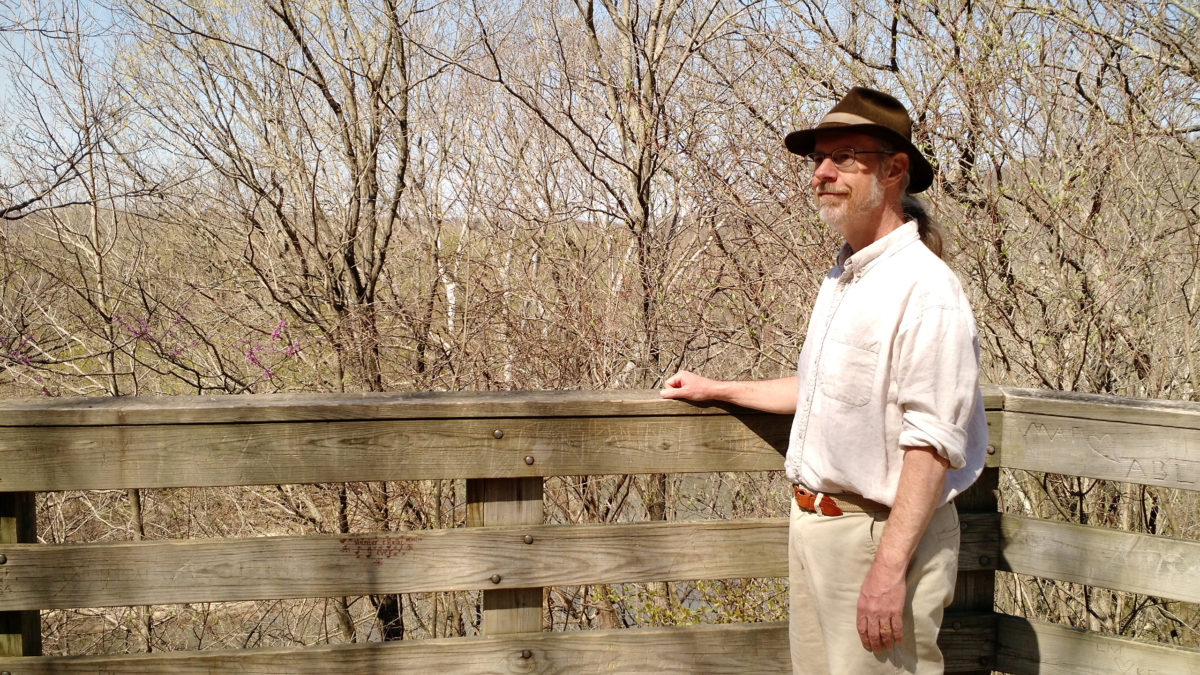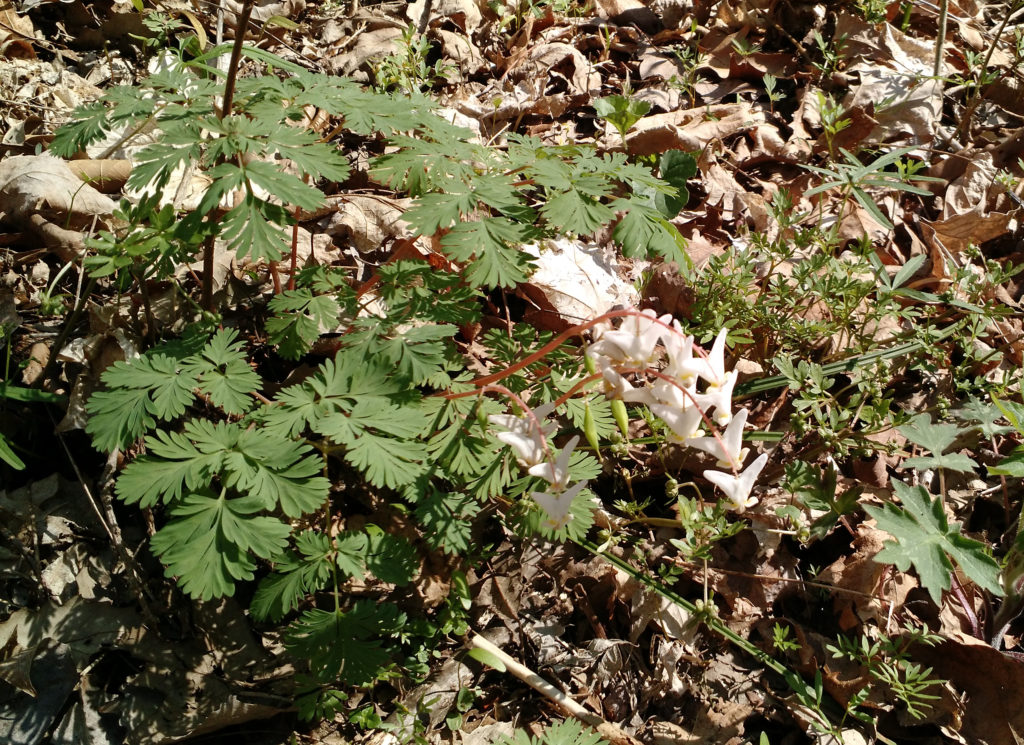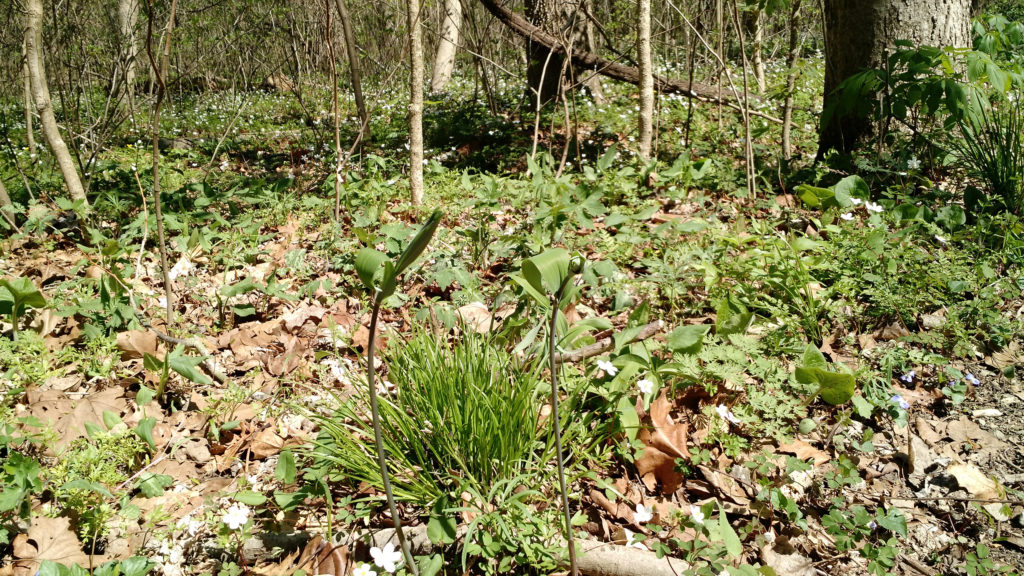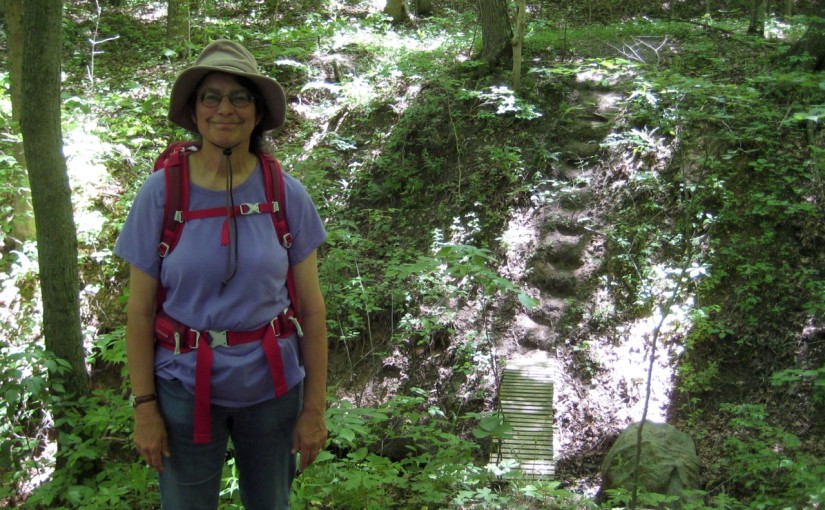I don’t know when I quit crawling. Probably around first grade. I’m not sure why, either. Because it was something babies did, and I was grown up, I expect.
I don’t remember my parents trying to get me to quit crawling, but I’ve seen other parents try to convince their children to stay off the ground, in the interests of either propriety or cleanliness.
At any rate, most people who crawled all the time before they were five years old have so completely lost the habit it doesn’t even occur to them as a possible way to get under or through something.
When I trained with the local parkour group, the first thing the group practiced was quadrupedal movement—crawling on hands and feet.
After that practice session, I added quadrupedal movement to my own practice, and the first time I went out to do it, Jackie decided to come with me.
(It happened like this: I told Jackie I was going to go play in the woods. “What are you going to do?” she asked. “Crawl and roll on the ground,” I said. “Can I come?”)
We did some rolling, both just rolling sideways and shoulder rolls. We also did some crawling, both prone (bear crawl) and supine (crab crawl).
The actual amount of time spent crawling was pretty small—I doubt if it added up to as much as 5 minutes—but it turned out to be a surprisingly successful bit of practice, because just in the week since then, it has usefully informed the way we dealt with obstacles repeatedly.
The first time was last week at Fox Ridge State Park. At one point the trail was blocked by some fallen trees. There was more than one trunk, making the geometry a bit complex for climbing over. There was enough space underneath the bottom trunk that it would almost have been possible to just do a “step under” move, except we were wearing packs, meaning that we needed another eight or ten inches of clearance.
If I hadn’t just practiced crawling, I don’t think it would have occurred to me that the easiest way to get under the trunks was to crawl on my hands and feet. We’d probably have done something complex, like both take our packs off, have me step under the barrier, handed both packs through (or over), and then have Jackie follow under the barrier.
With the recent reminder that crawling is simple and effective, that’s what we did. I tried to step under, found that there wasn’t clearance for my pack, so crouched down further, put my hands on the ground, and crawled on through. Took about five seconds. Got my hands a little dirty. Worked great.
Yesterday we hiked the backpacking trail at Forest Glen, which presented a problem for which supine crawling made an excellent solution.
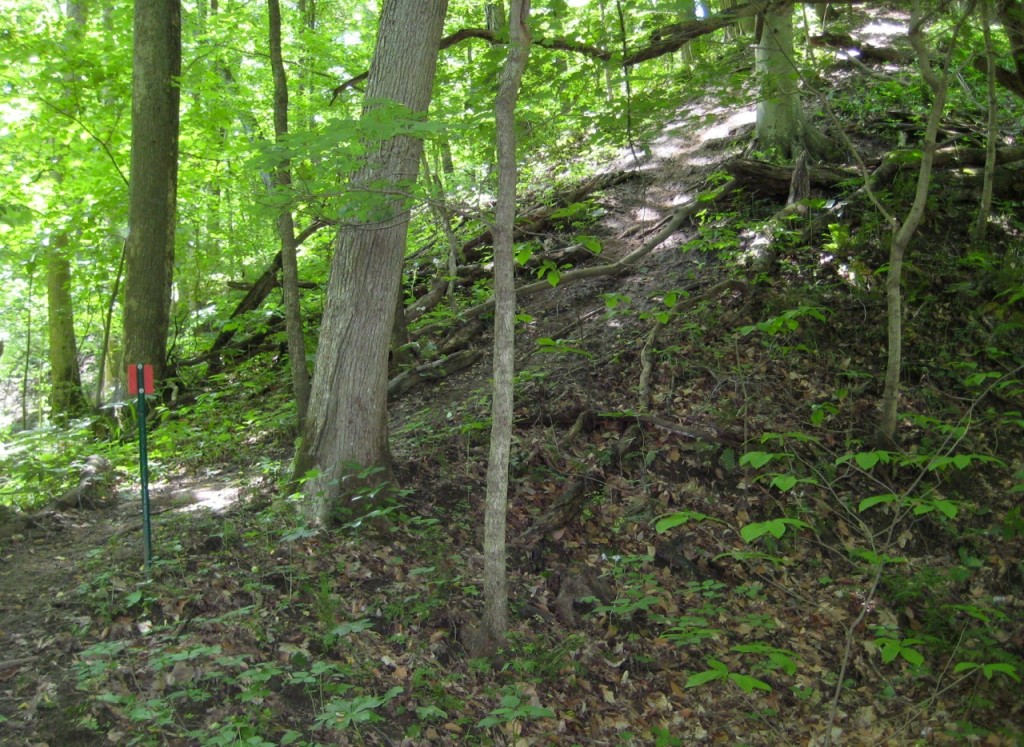 It’s hard to capture the steepness of this bit of trail in a photo. Not only was the trail steep, it was also wet, and the mud was slippery.
It’s hard to capture the steepness of this bit of trail in a photo. Not only was the trail steep, it was also wet, and the mud was slippery.
Jackie went down first, and quickly found that the combination of steep and slippery made it too dangerous to attempt to go down bipedally. She dropped down and did an inverted foot-hand crawl (aka supine crawl or crab crawl). It made for a quick, efficient, safe way down the steep bit in the path.
I followed behind, just the same way.
Rediscover quadrupedal movement. Besides being a way to get under or through something, it’s also very stable—perfect for dealing with loose, rugged, steep, uneven, or slippery ground.



